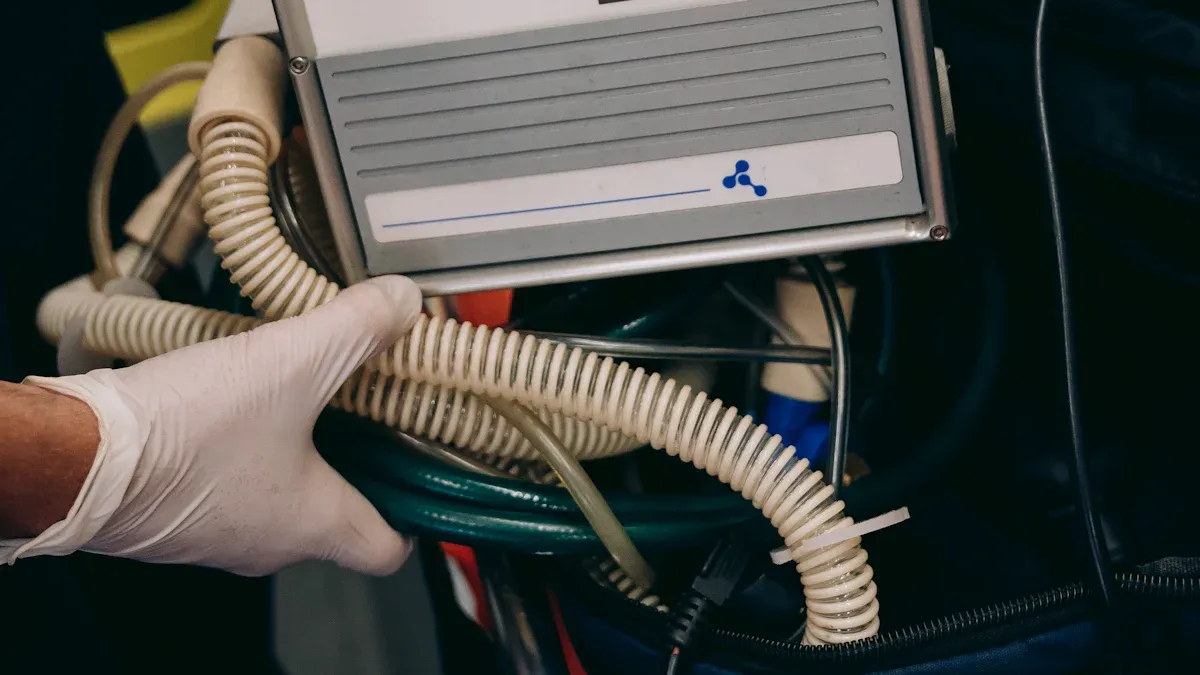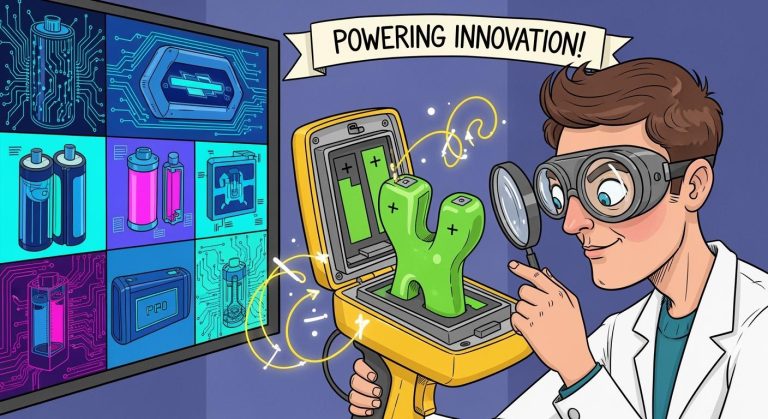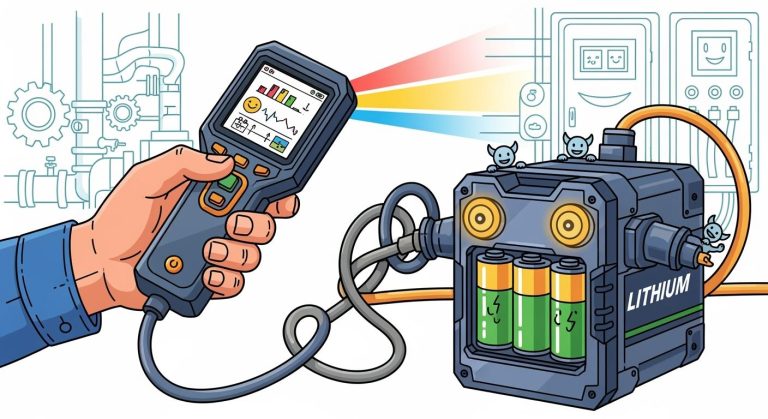
Waterproof batteries help you keep critical devices running during emergencies. In wet environments, such as showers or during floods, these batteries protect medical alert systems from failure. You lower the risk of short circuits, corrosion, and electrolyte leaks when you use waterproof designs with lithium battery packs. Reliable battery protection supports essential equipment like flashlights and radios, which play a vital role in emergency preparedness.
Key Takeaways
Waterproof batteries ensure reliable power in wet environments, reducing risks of short circuits and device failures.
Choosing waterproof batteries extends the life of medical devices by preventing dangerous reactions caused by water exposure.
Safety features in waterproof batteries, like sealed designs and advanced management systems, protect against fire and explosion risks.
In emergencies, waterproof batteries power critical equipment in ambulances, field hospitals, and disaster response situations.
Regular maintenance of waterproof batteries is essential to ensure their effectiveness and reliability in critical applications.
Part1: Waterproof Battery Benefits

1.1 Reliability in Wet Conditions
Waterproof batteries give you dependable power in wet environments. You can use these batteries in medical devices, robotics, and security systems without worrying about water damage. Lithium battery packs, such as LiFePO4, NMC, and solid-state types, are sensitive to moisture. Water can cause short circuits and rapid failure. Waterproof battery technology uses sealed cases and advanced materials to block water ingress.
Tip: Look for batteries with an IP67 rating. This rating means the battery can withstand immersion in water up to one meter for 30 minutes. Rugged power banks with IP67 protection keep your devices running during floods or heavy rain.
You benefit from stable voltage and consistent power delivery, even in humid or outdoor conditions. Waterproof batteries, including models from Optima, Varta, and Exide, use sealed construction and corrosion-resistant materials. These features help you maintain reliable performance in challenging environments.
Waterproof batteries operate effectively in humid environments and even when submerged in salt water.
Their open circuit voltage remains stable, reducing moisture-related failures in lithium batteries.
Sealed designs prevent water infiltration, ensuring reliable performance in wet conditions.
Consistent power delivery makes these batteries dependable for emergency use.
1.2 Device Longevity
You extend the life of your equipment when you choose waterproof batteries. Water can trigger hazardous reactions in lithium-ion batteries, especially in medical devices and industrial systems. If water enters a lithium battery pack, you may see heat generation, smoke, and even fire outbreaks. Waterproof battery technology prevents these risks by using robust seals and advanced battery management systems (learn more about BMS).
Water causes lithium compounds to break down, generating hydrogen gas and heat.
The combination of heat and flammable gases can lead to dangerous fires.
Waterproof batteries protect against these hazards, increasing device longevity and safety.
Here is a comparison of common lithium battery types used in waterproof applications:
Battery Type | Platform Voltage (V) | Energy Density (Wh/kg) | Cycle Life (cycles) | Water Resistance Suitability |
|---|---|---|---|---|
LiFePO4 | 3.2 | 90-160 | 2000+ | Excellent |
NMC | 3.7 | 150-220 | 1000-2000 | Good |
LCO | 3.7 | 150-200 | 500-1000 | Moderate |
LMO | 3.7 | 100-150 | 300-700 | Moderate |
LTO | 2.4 | 70-110 | 7000+ | Excellent |
Solid-State | 3.7 | 250+ | 2000+ | Excellent |
Lithium Metal | 3.7 | 300+ | 1000+ | Excellent |
You see that LiFePO4, LTO, solid-state, and lithium metal batteries offer the best water resistance and long cycle life. These advantages of waterproof batteries make them ideal for medical, industrial, and infrastructure applications.
1.3 Safety Features
Waterproof batteries protect you from safety hazards. Lithium-ion batteries react quickly with water, producing heat and flammable gases. You face risks like fire and explosion if water enters the battery. Waterproof battery technology uses sealed enclosures, corrosion-resistant materials, and advanced battery management systems to prevent these dangers.
Sealed construction blocks water and moisture.
Corrosion-resistant materials reduce the risk of battery failure.
Battery management systems monitor temperature and voltage, adding extra safety.
You can trust waterproof batteries in emergency situations. These batteries keep your medical devices, robotics, and security systems safe and operational. Applications of waterproof batteries include medical alert systems, industrial sensors, and infrastructure backup power.
Part2: Applications in Emergency Care

2.1 Ambulances & Field Hospitals
You rely on waterproof batteries to power critical equipment in ambulances and field hospitals. These environments demand reliable energy sources that can withstand moisture, spills, and unpredictable weather. Common battery types include:
Lead-Acid Batteries: Deliver high currents for backup systems.
Lithium-Ion Batteries: Offer high energy density and long lifespan, ideal for portable medical devices.
Nickel-Metal Hydride (NiMH) Batteries: Provide a balance of performance and cost, often used in anesthesia machines.
AGM Batteries: Reduce acid stratification, making them suitable for ambulance use.
You see lithium batteries used most often in medical applications because of their long life and stable performance. Waterproof battery technology ensures that defibrillators, ventilators, and monitors stay operational even in wet conditions.
2.2 Disaster Response
During natural disasters, you need equipment that works no matter the weather. Waterproof batteries are crucial for radios and flashlights. Their durability and weather resistance keep your communication tools running when you face floods, storms, or heavy rain. Emergency flashlights with high-quality waterproof ratings, such as IP68, resist impacts and harsh environments. You can depend on these devices to provide light and information during critical moments.
Note: Always include waterproof batteries in your emergency kits to ensure your essential devices remain functional.
2.3 Search & Rescue
Search and rescue teams often work in underwater or flood-prone areas. You benefit from waterproof batteries in drones, radios, and lighting systems. For example, the JX-6A Air-Water Rescue Drone uses an IP68-rated battery, allowing it to land on water multiple times. Its buoyancy supports an adult, improving safety during rescues. Waterproof battery technology increases the reliability of your equipment, helping you save lives in challenging environments.
2.4 Waterproof Medical Alert Systems
You depend on waterproof medical alert systems to protect patients in wet or unpredictable settings. These systems often use coin batteries or lithium battery packs for long-lasting power. Waterproof designs prevent failures caused by moisture, ensuring that alerts reach caregivers without interruption. Applications of waterproof batteries in medical alerts support patient safety in hospitals, care facilities, and home environments.
Part3: Challenges
3.1 Cost Factors
You face higher costs when you choose waterproof battery technology for emergency applications. Manufacturers must use advanced materials, specialized coatings, and precise sealing methods. These steps increase production expenses. You also need to consider the cost of regular testing and certification for IP67 or IP68 ratings. The table below compares the cost impact of waterproof versus standard lithium battery packs:
Feature | Standard Lithium Battery | Waterproof Lithium Battery |
|---|---|---|
Material Cost | Moderate | High |
Manufacturing Complexity | Basic | Advanced |
Testing Requirements | Standard | Rigorous |
Certification | Basic | IP67/IP68 |
Maintenance Cost | Moderate | High |
Note: For organizations focused on sustainability, review our approach to sustainability. If you have concerns about sourcing, see our conflict minerals statement.
3.2 Technical Limits
You encounter technical challenges when integrating waterproof features into lithium battery packs. Manufacturers use encapsulation, waterproof coatings, and sealants at critical joints. They also design housings with higher IP ratings to protect against moisture.
Today’s lithium batteries must operate in diverse environments, requiring compliance with strict environmental protection standards. Meeting these standards means manufacturers must maintain perfect sealing integrity throughout the production process.
You may see limits in battery size, weight, and energy density due to added protective layers. Advanced testing systems, such as the JL-X waterproof test system, help ensure durability. Manufacturers use ultrasonic welding, potting, and regular inspections to maintain performance.
Air pressure and leak detection tests identify weak points.
Airtightness testing ensures compliance with IP67 or IP68.
Simulated environmental tests evaluate long-term seal durability.
3.3 Maintenance
You must plan for regular maintenance to keep waterproof batteries reliable in emergency devices.
Inspect for physical damage, loose connections, or corrosion.
Test batteries under load to confirm power delivery.
Keep batteries charged and avoid full discharge.
Store batteries in a cool, dry place.
Improper maintenance can cause material degradation and compromised seals. This reduces the effectiveness of waterproofing and can lead to device failure.
Material degradation
Compromised seals
Reduced waterproofing effectiveness
You need a maintenance schedule for all battery-dependent medical devices. This ensures that applications of waterproof batteries remain safe and operational in critical settings.
Part4: Future of Waterproof Battery Technology
4.1 New Developments
You see rapid progress in waterproof battery technology. Companies now use advanced coatings and resilient materials to protect lithium battery packs from water damage. These improvements help you maintain device performance in harsh environments. Engineers apply thin polymer films to Battery Management System circuit boards, which shield sensitive electronics from humidity and splashes. This innovation increases reliability for medical, robotics, and security systems.
Material/Technique | Benefit | Application Area |
|---|---|---|
Advanced waterproof coatings | Prevent water ingress, reduce corrosion | Medical, industrial, robotics |
Polymer film on BMS circuit board | Protects electronics from humidity | Medical devices, infrastructure |
Moisture-proof outer packing | Extends battery life, prevents rust | Security, emergency systems |
You reduce risks like rust and short circuits by using these new materials. Waterproofing extends battery life and keeps your equipment ready for emergency situations.
4.2 Best Waterproof Medical Alerts
You rely on the best waterproof medical alerts to protect patients and staff in wet or unpredictable settings. These systems stand out because of their battery performance and durability.
Battery life ranges from 6 to 18 hours for active use, with IP67 water resistance.
Wearable devices last 2 to 5 years before battery replacement.
Base stations include backup batteries that operate for up to 32 hours during power outages.
You choose the best waterproof medical alerts for hospitals, care facilities, and field operations. These systems use lithium battery packs with robust seals and advanced management systems. You ensure continuous monitoring and fast response, even in emergencies.
4.3 Industry Trends
You notice strong growth in the waterproof battery market for medical and industrial applications. The demand for lithium battery packs rises as the elderly population needs more medical devices, such as glucose monitors and ECG machines. The Asia Pacific region drives future growth because of increased healthcare spending in countries like India and China.
The global medical batteries market is projected to grow at a CAGR of 6.2% from 2024 to 2029, reaching USD 2.7 billion.
North America leads the market, expected to reach USD 1.2 billion by 2029.
Technological advancements, higher healthcare spending, and more chronic diseases fuel this expansion.
Next-generation batteries, including solid-state and lithium-sulfur systems, promise better performance and reliability for healthcare.
You see industry leaders invest in sustainability and responsible sourcing. For more details, review our approach to sustainability and our conflict minerals statement. You stay ahead by adopting advanced waterproof battery technology and choosing the best waterproof medical alerts for your organization.
You improve emergency care reliability when you use waterproof medical alert system solutions. These systems protect critical devices in medical, robotics, and security settings. Waterproof medical alert systems use lithium battery packs like LiFePO4 and solid-state for long life and safety.
You depend on waterproof alert buttons and a waterproof help button to ensure fast response.
Waterproof medical alert system technology reduces risk in harsh environments.
Ongoing innovation in waterproof medical alert system design will shape the future of emergency response. You will see waterproof alert buttons and waterproof medical alert system features become standard in the industry.
FAQ
What makes waterproof medical alert devices essential in emergency care?
You depend on waterproof medical alert devices to ensure continuous operation in wet or unpredictable environments. These devices use lithium battery packs like LiFePO4 or solid-state, which provide reliable power for medical alerts, even during floods or accidental water exposure.
How do waterproof medical alert devices support fall detection capabilities?
You benefit from waterproof medical alert devices with advanced sensors. These devices use lithium battery packs to power fall detection capabilities. When a fall occurs, the device sends an immediate alert, even if the user is in the shower or exposed to water.
Which lithium battery types are best for waterproof medical alert device applications?
You should consider LiFePO4, solid-state, and lithium metal batteries for waterproof medical alert device use. These battery types offer high cycle life, stable platform voltage, and excellent water resistance, making them ideal for medical, robotics, and security systems.
How do you maintain waterproof medical alert devices for long-term reliability?
You need to inspect waterproof medical alert devices regularly. Check for physical damage, test battery performance, and confirm seals remain intact. Proper maintenance ensures your lithium battery packs deliver consistent power for medical alerts and fall response.
Can waterproof medical alert devices operate during power outages?
You can rely on waterproof medical alert devices with backup lithium battery packs. These devices continue to function during power outages, supporting medical alerts and fall detection in hospitals, field clinics, and industrial settings.






